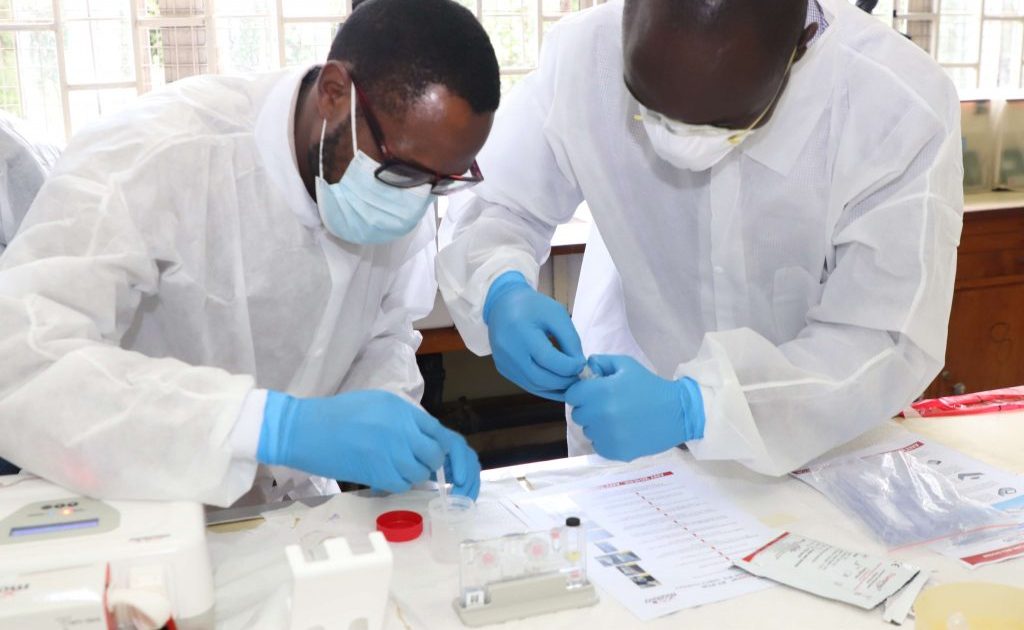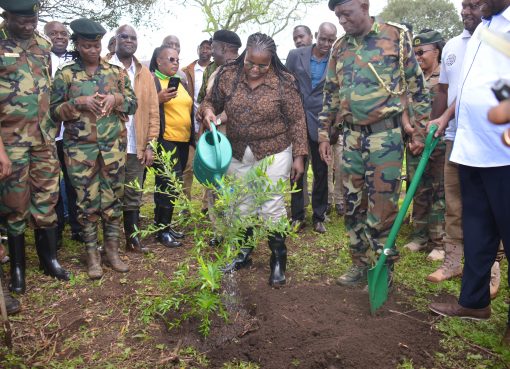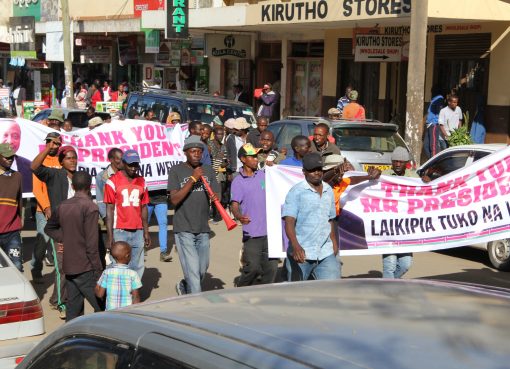Adoption of automated technology in the fight against Tuberculosis (TB) in Nakuru County has enabled easier and faster screening, diagnosis and treatment of the disease, thereby reducing further community transmission.
The County TB, Leprosy and Lung Disease Coordinator, Dr. Neimah Barasa, said the advanced technology, including a digital, Artificial Intelligence-enabled X-ray machine, GeneXpert machines, and TrueNat point-of-care nucleic acid amplification test equipment, aims at enhancing the precision and efficiency of TB diagnosis in the county, hence facilitating appropriate treatment.
While noting that up to 50 per cent of people with TB do not have the classical symptoms of the disease, Dr. Neimah noted that the only way such patients would be diagnosed early and before they have symptoms was through new advanced technologies.
She explained that the county government had made significant strides in TB management with 637 health facilities spread across the county, out of which 250 are TB treatment sites, while 102 are diagnostic sites.
Dr. Neimah was speaking during a meeting with a group of health workers from Homa Bay County who were in Nakuru on a learning exchange programme focusing on strengthening Tuberculosis (TB) care and service integration.
The coordinator disclosed that now Nakuru had in place eight TB sample referral sites equipped with advanced technology, including one digital Artificial Intelligence-enabled X-ray machine, seven GeneXpert machines and one TrueNat point-of-care nucleic acid amplification test equipment, adding that last year the Nakuru County Teaching and Referral Hospital (NCTRH) was among eight facilities nationwide that initiated the programme of Digital Chest X-ray (DCXR) with AI, introducing the new diagnostic tools in accordance with World Health Organization recommendations.
The coordinator expressed optimism that with the new tools they were edging towards finding the 40 per cent of missing cases, thereby reducing further community transmission of TB.
Four years ago, the World Health Organization (WHO) endorsed the rapid molecular test TrueNat.
TrueNat, which is more advanced in testing, is said to be a chip-based molecular test for TB, which is battery-powered to operate in peripheral laboratories and can generate results in one hour.
Dr. Neimah indicated that in addition to fast detection of TB, the equipment could detect resistance to Rifampicin in an additional one hour, meaning that if a patient is detected to have this strain that is resistant to Rifampicin, they would be put on the right medication.
She noted with satisfaction that the TrueNat point-of-care nucleic acid amplification test, which is a portable digital Chest X-ray equipment, had improved access to TB testing for patients with signs and symptoms of TB, especially in hard-to-reach areas where sample referral systems are unavailable, or not properly constituted.
GeneXpert diagnostics have become the gold standard for TB testing, particularly for drug-resistant TB (DR TB), which is difficult to diagnose through the traditional sputum smear technologies or chest X-rays, Dr. Neimah added.
GeneXpert is said to also rapidly detect rifampicin-resistant TB (a proxy for DR-TB diagnosis) along with drug-susceptible TB, but the diagnostic machines need electricity and are expensive to operate.
Dr. Neimah pointed out that back in the day, when health care facilities used to rely on the old x-ray machines and other methods, so many TB cases would be missed, and also it would take many days before getting the results.
The digital Artificial Intelligence-enabled X-ray machine at the Nakuru County Teaching and Referral Hospital (NCTRH) was reportedly acquired through support from the National TB Programme, the African Medical Research Foundation and Qure.ai, an AI solutions provider.
The technology provides automated interpretation of radiology exams like X-rays, CTs and ultrasound scans, enabling faster diagnosis and speedier treatment of the disease.
The County Executive for Health, Roselyn Mungai, noted that adoption of advanced technology had revolutionized TB diagnosis by enhancing imaging accuracy through AI-supported tools and reducing turnaround time for patients.
She said radiologists, radiographers and clinical officers from the chest clinic and the hospital’s outpatients at NCTRH had already been trained on the use of this technology.
“The technology is a game changer at NCTRH that serves about six counties, as it has made things easier for doctors and patients and plays an important role in TB treatment,” Mungai said.
The Nakuru health department and the Homa-Bay delegation deliberated on various TB prevention, detection and treatment areas, including community TB care, diagnostics, the TB care cascade, and Public-Private Mix (PPM) approaches.
They also shared insights on quality improvement strategies, monitoring and evaluation systems, and commodity management to enhance TB service delivery.
Eradication of TB in Africa has been challenging due to various social, economic, healthcare, and biological factors. The co-infection of HIV/AIDS and TB is a major challenge as it weakens the immune system, making individuals more susceptible to TB and complicating the management of both diseases.
Tuberculosis remains a major cause of morbidity and mortality in Kenya and is said to affect all age groups, but has its greatest toll in the most productive age group of 15 to 44 years.
The major factor responsible for the large TB disease burden in Kenya is the concurrent HIV epidemic, where Kenya is ranked fourth in Africa with the highest TB burden after South Africa, Nigeria and Ethiopia.
According to the Kenya Demographic Survey 2022, about 12,000 people are infected with TB every year, while 32,000 die annually. Consequently, 21,000 deaths were reported in the same year, a reduction from 31,000 in 2019.
By Esther Mwangi





